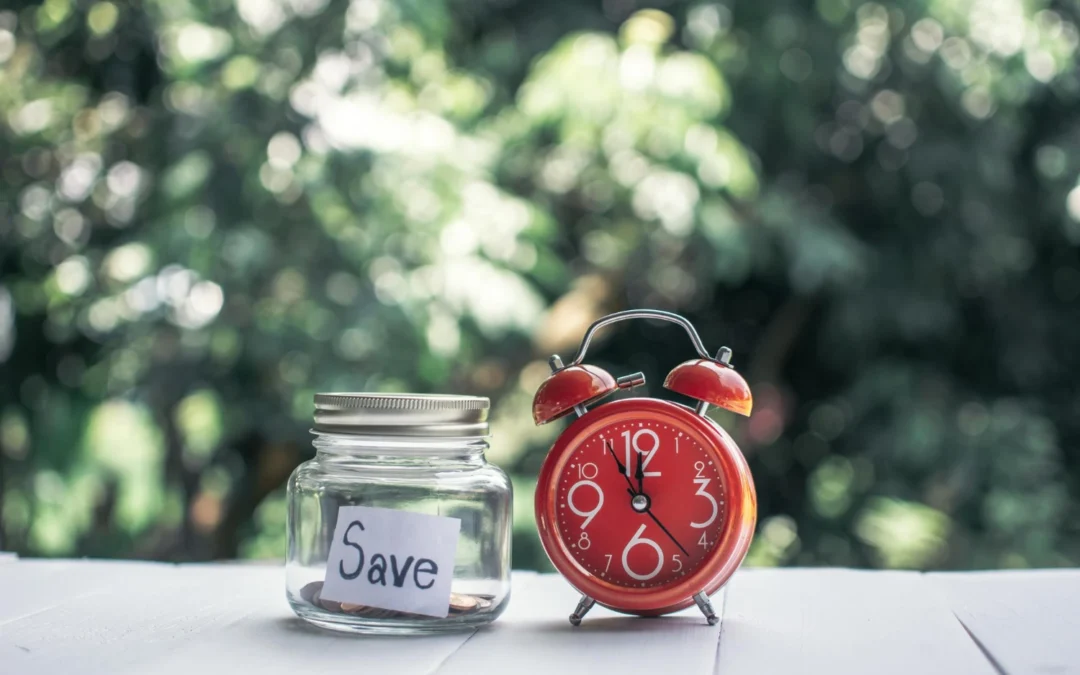Understanding Daylight Saving Time and Its Effects
Daylight Saving Time (DST) shifts our clocks forward in the spring and back in the fall. While it’s intended to make better use of daylight, it can disrupt our sleep cycles, leading to fatigue, mood swings, and difficulty concentrating, making it very challenging to adjust for daylight savings. Even a one-hour change affects the body’s circadian rhythm — the internal clock regulating sleep and wake cycles. The disruption can be particularly challenging for people with strict schedules, such as students, shift workers, and those with pre-existing sleep disorders.
How Daylight Saving Time Affects Sleep
- Disrupts circadian rhythm – The body needs time to adjust, often causing sleep disturbances.
- Reduces total sleep duration – Many people lose 40–60 minutes of sleep after the spring transition, which can add up over time.
- Increases grogginess and morning fatigue – A misaligned internal clock can make waking up harder, affecting productivity and cognitive function.
- Raises stress and fatigue levels – Poor sleep increases cortisol levels, making daily tasks more difficult and reducing overall energy.
- Elevates health risks – Studies link DST to an increase in heart attacks, strokes, and workplace accidents due to sleep deprivation. A 2019 study published in the Journal of Clinical Medicine found a significant increase in cardiovascular events following DST changes.
- Affects mental health – Sleep deprivation is linked to higher rates of depression and anxiety and adjusting to DST may exacerbate these conditions in susceptible individuals.
Practical Tips to Adjust for Daylight Savings
Adapting to DST requires small changes to help your body transition smoothly:
Adjust Your Sleep Schedule Gradually
Start shifting your bedtime and wake-up time by 15–30 minutes a few days before the time change. This helps your body ease into the new schedule, making the transition smoother. Parents with young children can also help their kids adjust by gradually modifying bedtime routines in the days leading up to DST.
Stick to a Consistent Sleep Routine
Go to bed and wake up at the same time every day, even on weekends. A steady sleep routine strengthens your body’s sleep-wake cycle. Studies show that maintaining a regular sleep schedule reduces the risk of chronic sleep deprivation and improves overall well-being.
Create an Ideal Sleep Environment
- Keep your bedroom cool, dark, and quiet to promote deep sleep.
- Use blackout curtains to block early morning light, especially if you are sensitive to sunlight.
- Avoid digital screens at least an hour before bed to minimize blue light exposure, which suppresses melatonin production.
- Invest in a comfortable mattress and pillow to support better sleep posture and reduce body aches.
- Consider using white noise machines or fans to drown out disruptive sounds.
Get Morning Sunlight
Exposure to natural light in the morning helps regulate melatonin, the hormone responsible for sleep. Spending 20–30 minutes outdoors after waking up can boost alertness, improve mood, and help reset your internal clock more efficiently. If outdoor exposure is not possible, consider using light therapy lamps, which can mimic natural daylight.
Limit Caffeine and Alcohol
Caffeine can disrupt sleep, while alcohol interferes with deep sleep stages. Avoid caffeine in the afternoon and limit alcohol consumption around the time change. Instead, opt for calming herbal teas like chamomile or valerian root, which can support relaxation and sleep quality.
Practice Relaxation Techniques
A calming pre-sleep routine signals your body to wind down. Try:
- Reading a book to distract the mind from stress.
- Meditation or deep breathing exercises to activate the parasympathetic nervous system and induce relaxation.
- A warm bath with Epsom salts to relax muscles and encourage sleepiness.
- Listening to soothing music or white noise to create a peaceful atmosphere.
Avoid Late-Day Naps
Short naps (20–30 minutes) can boost energy, but napping too late in the day can make it harder to fall asleep at night. During the DST transition, avoid naps in the late afternoon or evening, as they can further disrupt your sleep schedule.
Adjust Meal Times
Eating schedules influence your internal clock. Gradually shift meal times to align with the new schedule, and avoid heavy meals close to bedtime. Foods rich in tryptophan (turkey, nuts, dairy) can promote melatonin production and support better sleep.
Stay Active, But Time It Right
Regular exercise supports better sleep by reducing stress and regulating the circadian rhythm. However, avoid intense workouts close to bedtime, as they can elevate adrenaline levels and delay sleep onset. Morning or early afternoon workouts are ideal for maintaining energy levels and promoting restful sleep at night.
Use Smart Lighting Strategies
Light exposure plays a key role in adjusting to DST. In the evening, dim indoor lights and reduce screen exposure to help your body prepare for sleep. Using warm, amber-colored lighting instead of bright white light can also signal your brain that it’s time to wind down.
The Benefits of Daylight Savings Adjustment
Making small adjustments to your routine can:
- Improve focus, mood, and cognitive performance, helping you feel more alert throughout the day.
- Reduce stress, fatigue, and irritability, which can negatively impact relationships and productivity.
- Lower health risks associated with sleep deprivation, including heart disease and metabolic disorders.
- Support immune function through better rest, as quality sleep is crucial for a strong immune system.
- Enhance mental well-being by reducing symptoms of anxiety and depression linked to sleep disruptions.
Daylight Saving Time can disrupt sleep, but with simple adjustments, you can minimize its effects. Gradually shifting your schedule, prioritizing good sleep habits, and practicing relaxation techniques can help your body adapt smoothly. If you find yourself struggling with prolonged sleep disturbances, consider speaking with a mental healthcare professional for further guidance. By taking proactive steps, you can maintain a healthy sleep routine year-round and ensure that the time change does not negatively impact your well-being.


